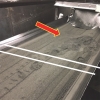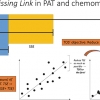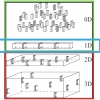Articles
WHAT are sampling errors—and WHAT can we do about them? Part 1
The Sampling Column provides some easy-to-understand examples of what sampling errors are, what are the consequences of them and what can be done about them. Particular examples from pharma, PAT and NIR spectroscopy are provided.
Sampling for spectroscopic analysis: consequences for multivariate calibration
The Sampling Column points out that incorrect sampling is irreversible: no amount of chemometrics or further samples will be able to produce a valid model if the sampling is not representative. This applies in flowing PAT analyses as much as in static.
Inspiring people with process analytical technology
The authors tell us about an initiative to promote analytical spectroscopy to a range of people from school children and their parents to Dutch chemists. PAT is the key.
Experimental validation of a primary sampling system for iron ore pellets
This feature forms an intermezzo in the current segment of process sampling columns. We have asked Karin Engström, Luossavaara Kiirunavaara AB (LKAB), Kiruna, Sweden to outline how industrial validation of a process sampling system takes place following ISO standards guidelines.
Introduction to process sampling
This is the first of a number of columns dealing with process sampling, i.e. sampling from moving streams of matter. As will become clear there is a great deal of redundancy regarding how to sample both stationary and moving lots, but it is the specific issues pertaining to dynamic lots that will be highlighted.
Process spectroscopy uptake: Interview with Martin Gerlach, Bayer Technology Services
An Interview with Martin Gerlach discussing the Bayer Technology Services (BTS) Process Analysis approach.





